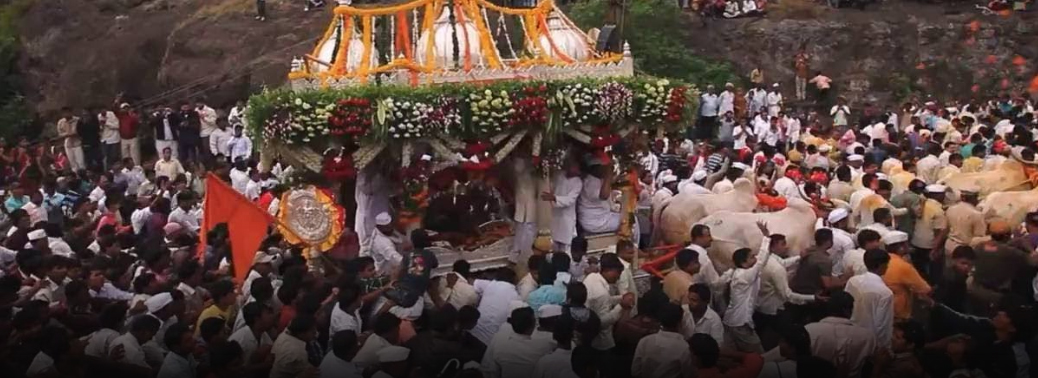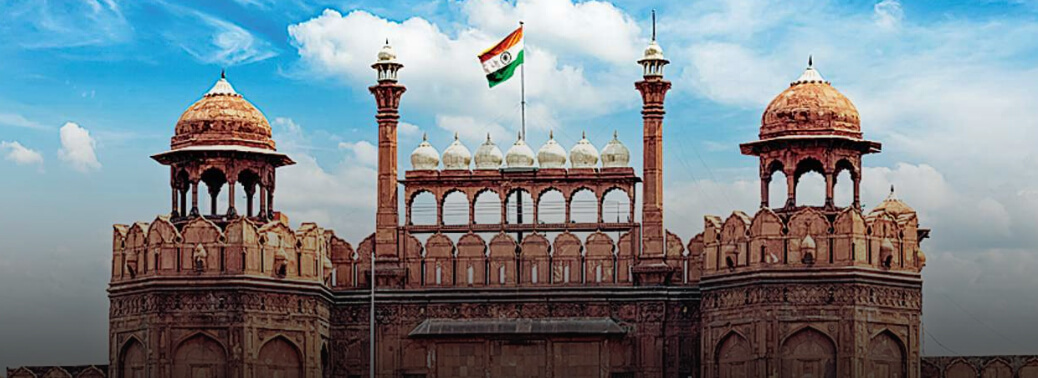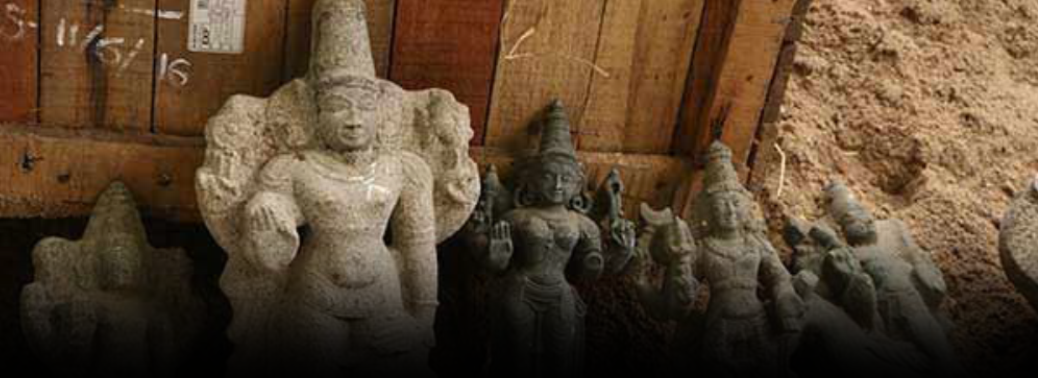Category: GS1A-Indian culture will cover the salientaspects of Art Forms
Pandharpur Wari
30, Jun 2019

- Pandharpur Wari is related to Bhakti Movment
- It is an annual pilgrimage (yatra) to Pandharpur – the seat of the Hindu god Vithal in
- Palakhis (palanquin processions) carrying the paduka (foot prints) of various saints – most notably Dnyaneshwar and Tukaram – from the Varkari (Warkari, “one who performs the Wari”) sect (which venerates Vithal), are taken from their respective shrines to Pandharpur.
Bhakti Movement
- As a social movement, the Bhakti movement, challenged caste hierarchy, emphasized the individual’s direct connection to god and the possibility of salvation for all through good deeds and simple living.
- In Maharashtra, the Bhakti movement began in the late 13th century.
- Its proponents were known as the Varkaris.
- Among its most popular figures were Jnanadev (1275- 96),Namdev (1270-50) and Tukaram (1608-50), who have left behind many verses that embody the essence of Bhakti.
Tukaram
- Saint of the Bhakti movement in Maharashtra,
- Tukaram is best known for his devotional poetry called Abhanga and community-oriented worship with spiritual songs known as kirtans
- He was part of the egalitarian, personalized Varkari devotionalism tradition
- Tukaram was a rebel from Shudra by caste,
- Defying the injunctions of the Brahmins, Tukaram chose to write on religious matters, and that too in Marathi, the language of the people.
Namdev
- was an Indian poet and saint from Maharashtra,
- writings were also recognized by the “Gurus” of Sikhism and are included in the holy book of Sikhism, the Sri Guru Granth Sahib.
- Namdev was influenced by Vaishnavism.
- His philosophy contains both nirguna and saguna Brahman elements.
Dnyaneshwar
- was a 13th-century Marathi saint, poet, philosopher and yogi of the Nath Vaishnava tradition.
- Dnyaneshwar’s ideas reflect the non-dualistic Advaita Vedanta
- His legacy inspired saint-poets such as and Tukaram
RED FORT
25, Jun 2019

Context:
ASI carries out restoration of Mughal •era parts of Red Fort.
About:
- Red fort fuses architectural styles of the Timurids and the Persians.
- Red Fort has many structures that serve as fine examples of Islamic architectural style and Mughal architecture,
- Built By: Shah Jahan
- Architect: Ustad Ahmad Lahauri Architectural styles: Mughal, Indo-Islamic Current Status: UNESCO World Heritage Site On the Banks of River Yamuna,
- The Red Fort is known for its gardens and a water channel called The Stream of Paradise.
Salient Features of Indo-Islamic Architecture:
- Islamic Architecture is characterised by a few Visible Symbols.
- One is the arch, which frames the space;
- second symbol is the dome, which looms over the skyscape;
- third is the Minaret, which pierces the skies. Minarets were Actually Symbols in the Middle of Deserts
- Muslims forbidden to replicate living forms on any surface, developed their religious art and architecture consisting of the arts of arabesque, geometrical patterns and calligraphy on plaster and stone.
Indian Indo Islamic Architecture:
- The Indo-Islamic architecture inculcates the elements of Saracenic, Turkish and Arab architecture
- The first new element added in the Indian architecture was the use of shapes instead of natural forms. This apart, use of calligraphy as inscriptional art was also a new element added to by Muslims
- Inlay decoration and use of coloured marble, painted plaster and brilliantly glazed tiles.
Indo-Islamic architecture is conventionally categorised into the following four Categories:
- Imperial Style (Delhi Sultanate)
- Provincial Style (Mandu, Gujarat, Bengal, and Jaunpur)
- Mughal Style (Delhi, Agra, and Lahore)
- Deccani Style (Bijapur, Golconda).
The Building Material:
- One thing is very common in these buildings that the walls are extremely thick and largely constructed of Rubble masonary, which was easily available.
- These walls were then cased over with limestone plaster or dressed stone.
- A variety of stones were used such as Quartzite, Sandstone, Buff, Marble, etc. In some cases, the Polychrome Tiles were used to finish the walls.
ASI IDENTIFIES INDIAN ARTEFACTS SEIZED FROM SMUGGLER
09, May 2019

Why in News:
- From idols dating back to the Gupta period (5th-6th Century AD) to terracotta objects of the Harappan culture, a range of Indian antiquities and artefacts that were smuggled identified by the Archaeological Survey of India (ASI) during a team’s recent visit to the United States.
Details:
- “The antiquities comprise beautiful bronzes from the Suttamalli and Sripurantan temples of
- Tamil Nadu and also a very significant image of Mahakoka Devata.
- Of these, four antiquities were stolen from the protected monuments at Karitalai, district Katni in Madhya Pradesh.
- Apart from that, 56 terracotta objects that were returned by Toledo Museum in Ohio to the Indian consulate were declared to be antiquities by the team.
- Among them, few were identified as antiquities, like the stone image of the Buddha of Mathura School, a terracotta image of the Buddha belonging to the Gupta period and a set of 10 copper plates engraved with Quranic verses of the late Mughal Period,
Archaeological Survey of India (ASI)
- The ASI is the premier organization for the archaeological researches and protection of the cultural heritage of the country.
- The prime objection of ASI is to maintain the archaeological sites, ancient monuments and remains of national importance.
- Headquarters: New Delhi.
- Established: 1861 by Alexander Cunningham.
- It regulates all archaeological activities as per the provisions of the Ancient Monuments and Archaeological Sites and Remains Act, 1958.
- It functions under the aegis of the Union Ministry of Culture. It also regulates Antiquities and Art Treasure Act, 1972.






